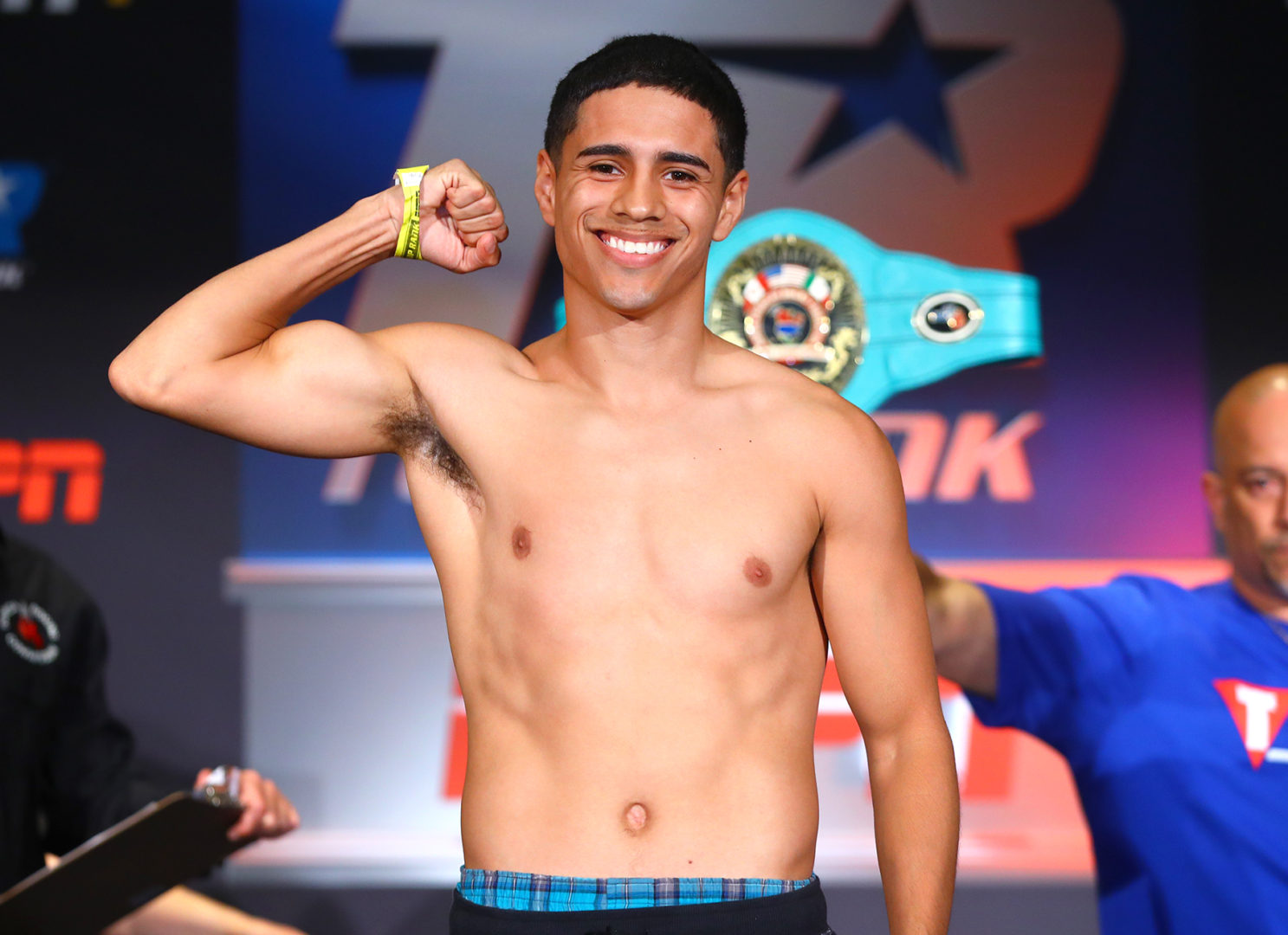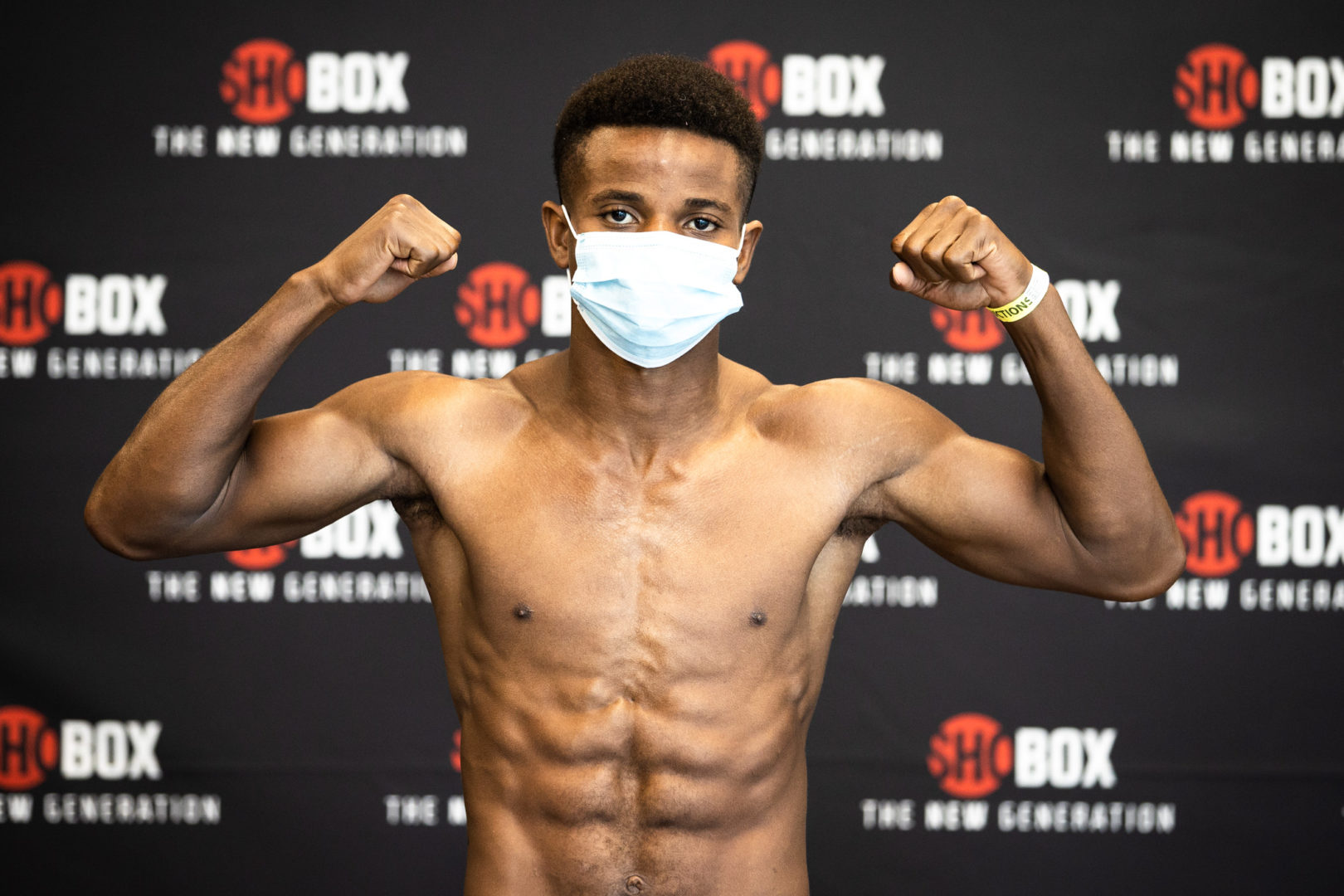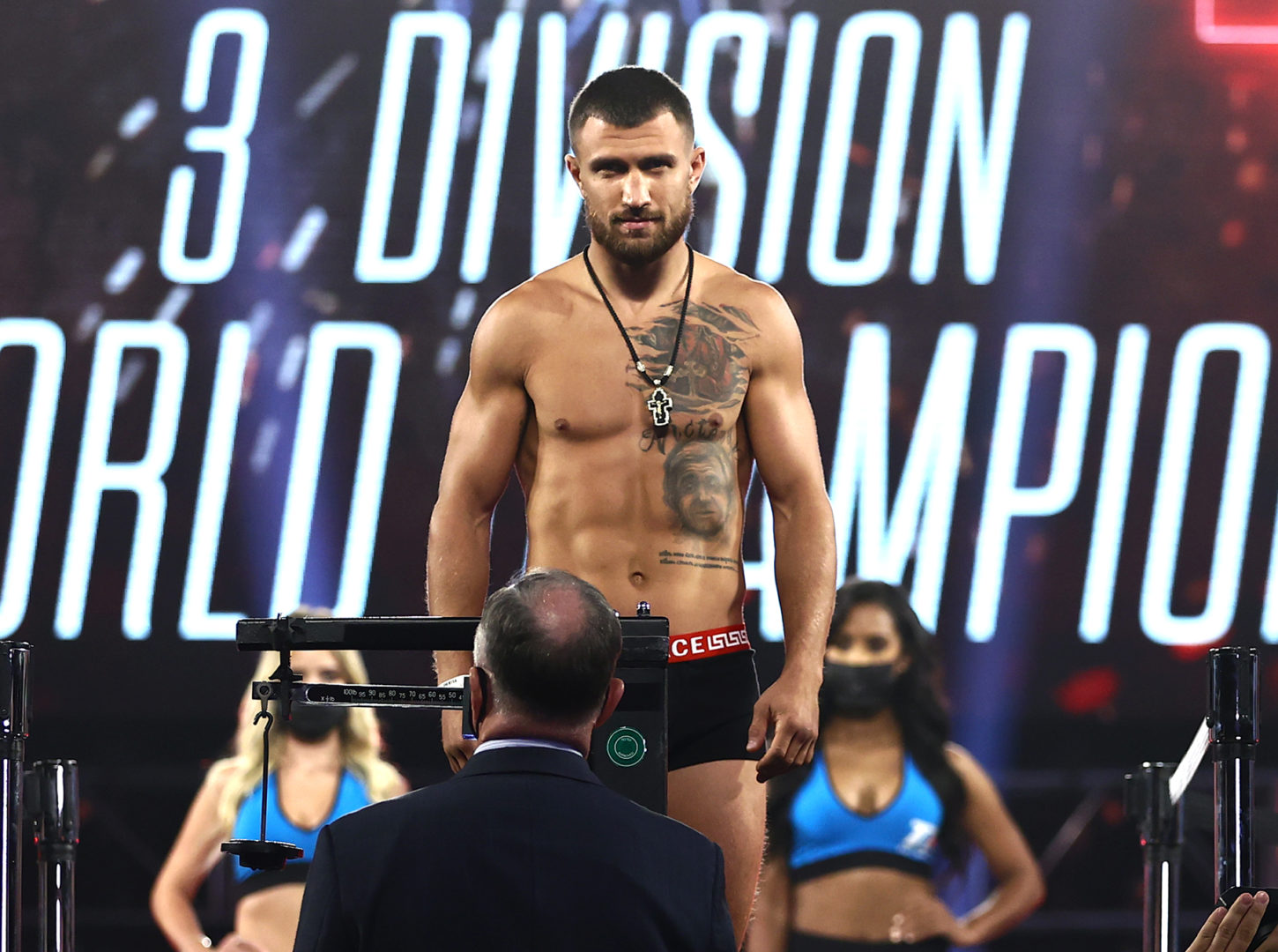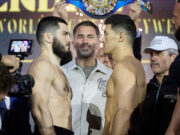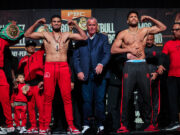
Just south of Tucson in November 2007, Robert “The Ghost” Guerrero made the definitive statement of his prizefighting career. Defending an actual world title – IBF featherweight, as opposed to NABO this or “intercontinental” that or “interim” the other – against a proven contender, Mexico’s Martin Honorio, Guerrero, fighting for a wife recently diagnosed with leukemia, charged out his corner, moved elegantly, and with the first left hand he landed, knocked Honorio silly.
Honorio rose from the blue mat, staggered across the canvas and allowed referee Tony Weeks to save him, only 56 seconds in the contest. That was almost five years ago. Guerrero has never improved on the form he showed in Arizona, but his PR team sure has – explaining away inactivity, accusing sundry champions of avoiding him, and making Casey Guerrero the centerpiece of its marketing strategy. Or aren’t we allowed to call it that?
Robert and Casey’s story was retold once more Saturday, this time by Showtime, as the leadin for Guerrero’s interim WBC welterweight title match with the WBC’s Silver welterweight titlist, Selcuk Aydin of Turkey, in San Jose, Calif.’s HP Pavilion, a match Guerrero won by fair, unanimous-decision scores. The Guerreros’ tale is one of privation, commitment and resilience, and medical triumph. That it should become grist for a press-release mill is an apt commentary on this unfortunate era.
Robert Guerrero is not a welterweight, even if he is now an interim welterweight titlist. Guerrero does not belong in the division because his best punches are not forceful enough to keep a middling opponent off him, and this fact is more important than any tactical counsel he may or may not receive and may or may not heed. The layman’s favorite advice to his favorite fighter is to “move” and “use angles” or “box” more. But because the ring is only so large and three minutes within it is a disproportionately long time, fleeing an opponent whom one is unable to hurt is both an evolutionarily obvious tactic and a rarely successful one. A prizefighter must find a way to hurt his opponent, or else.
This is the difference between the sport Guerrero engaged in Saturday night in San Jose and what amateurs did Saturday night in London. Punches in Olympic boxing are judged by aesthetics, not effect; a punch that passes unobstructed from one man’s shoulder to another’s head is the best kind in the Olympics, regardless of shape or consequence. Olympic boxing, and the effects its scoring has wrought, are often and appropriately compared to fencing.
Fencing provided the shuffle step Selcuk Aydin preceded his jab with in the opening rounds Saturday – one of several clever and overlooked techniques Aydin featured. It was a similar step to what Miguel Cotto used against Shane Mosley a week after Guerrero blitzed Honorio in 2007, when much to onlookers’ surprise Cotto’s jab was consistently quicker than Mosley’s.
Guerrero has plenty of class and showed a good bit of it Saturday, and the earlier the better. His best combination – because it is boxing’s best combination – was uppercut/hook. As Guerrero is a southpaw, the combination began with a left uppercut thrown at Aydin’s lowered, charging head.
The uppercut transfers its thrower’s weight to his front foot and pushes his back shoulder forward. The hook then returns all the weight to his back foot, snapping the front hip round and pulling on the back shoulder. The front hand follows its hip and collides with an opponent’s just-raised head. The beauty of this combination, along with the leverage it generates, is that a fighter who lands the uppercut is unlikely to miss with the hook.
Guerrero did not miss with his left uppercut or right hook in the opening rounds of Saturday’s match. And neither punch had any meaningful effect on Aydin because Guerrero does not punch like a welterweight. Aydin walked through Guerrero’s blows. There were times Guerrero used activity and footspeed, and clinching and more clinching, to fluster Aydin and reduce the Turk’s activity, but there were very few moments Aydin stepped backwards because of anything Guerrero did.
Afterwards, Gilroy, Calif.’s Guerrero, goaded by his hometown followers’ euphoria at his victory, did something a wee bit maniacal. He called-out Floyd Mayweather, last seen bouncing right hooks and crosses off the head of a 154-pound Miguel Cotto. Against Aydin, Guerrero showed a large susceptibility to right hands. By insistently dipping to his left, Guerrero put his head in a place even a sloppy orthodox fighter could find it. Mayweather is not a sloppy orthodox fighter. Mayweather may well be boxing’s most accurate puncher, putting the middle knuckle of his right fist within a dime’s radius of wherever he aims it, with terrible frequency.
Guerrero needs to revisit what thoughts and emotions he experienced in the second half of Saturday’s 10th round, when the only way he precluded Aydin’s punches from moving him round the ring was by placing both hands behind Aydin’s back and doggy-paddling to the ropes, then ask himself if welterweight is really the place to make his living. If somehow he decides the answer is yes, he should fight Victor Ortiz before Ortiz’s jaw heals or hope Andre Berto fails another drug test. Guerrero ought to return to lightweight, instead, and work on winning a meaningful title there.
One thing he cannot be allowed to do is face Floyd Mayweather. Guerrero is a good guy, as we’ve been told so very many times, and he doesn’t deserve what Mayweather would do to him.
Bart Barry can be reached at bart.barrys.email (at) gmail.com


